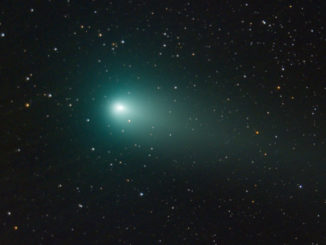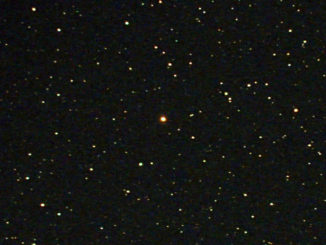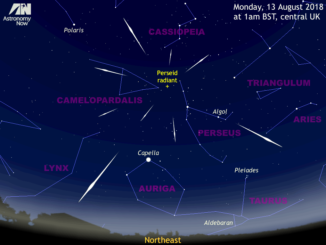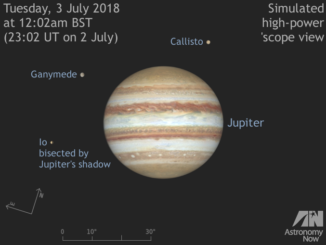
Observing


See bright Comet 21P’s close brush with conspicuous Capella
If you’ve never seen a comet, there’s currently a bright example visible in the late evening about to make a close approach to the 6th brightest star in the night sky on the UK night of 2–3 September. We show you how to find Comet 21P/Giacobini-Zinner around the time it passes within a degree of prominent star Capella.

See the Moon meet the Red Planet on the UK night of 23 August
Mars may be almost four weeks past opposition, but it’s still an imposing sight low in the southern sky around local midnight. But if you are in any doubt about identifying the Red Planet, the waxing gibbous Moon acts as a convenient celestial guide late into the UK night of Thursday, 23 August. See both the Moon and the Red Planet in the same field of view of low-power binoculars.

See innermost planet Mercury’s favourable dawn show
Mercury attains its maximum westerly elongation from the Sun on 26 August, meaning that the innermost planet is currently well placed for observation from the UK and Western Europe in the eastern sky around 40 minutes before sunrise. In addition to those in the evening sky, you might just see all five bright naked-eye planets this month!

Find Barnard’s Star, the Sun’s closest stellar neighbour visible from the UK
Barnard’s Star is a familiar name in both the history of astronomy and popular culture, but did you realise that it’s the closest stellar body to the Sun that you can see from the British Isles and similar latitudes? We tell you some fascinating facts about this famous runaway star and show you how to locate it.

Don’t miss 2018’s favourable Perseid meteor shower, 12–13 August
From the UK evening of Sunday, 12 August into the early hours of the following morning it’s the maximum of the annual Perseid meteor shower. This year, a new Moon setting in twilight makes prospects for watching this natural firework display particularly good. So, find somewhere away from the streetlights, settle into a garden lounger facing northeast and enjoy the show!


See the Moon join a midnight planetary parade from 21–28 July
If clear skies persist, observers in the UK can view four naked-eye planets between now and the end of the month. Brightest planet Venus is visible low in the west some 45 minutes after sunset, while the waxing Moon is your celestial pointer to Jupiter, Saturn and Mars between 21 and 28 July at midnight.

View the longest total lunar eclipse of the 21st century on 27 July
Friday, 27 July sees the second total lunar eclipse of 2018, which also happens to be the longest of the 21st century. Observers in Antarctica, Australasia, Russia, Asia, Africa, Scandanavia, Europe, Central and Eastern South America will see the event. The Moon rises at mid-eclipse as seen from the British Isles, some 6 degrees north of Mars at opposition.

